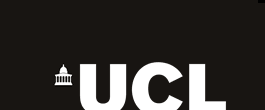The introduction to the use of a programming language (Visual Basic for Applications) will also be covered in part in the lectures, but mostly directly at the computer terminal. As with the Excel section there are files (in WORD or PDF format) defining the tasks.
The lectures and practical exercises on Visual Basic for Applications (VBA) are used only as an introduction to the topic of programming. They do not aim to exhaustively teach VBA specifically or programming in general. VBA in Excel is used as a vehicle to introduce programming as its used in many Windows applications (so readily available) and you can easily couple your code to data, calculations or plots in a spreadsheet.
Because of VBA's close connection with Excel, one way to begin to
study programming is to let Excel record a macro - a record of your
spreadsheet actions. This is the first VBA exercise,
VBA-1.
You can also begin to learn
programming by examining an existing program to see if you can
understand what it does. Thus in the VBA exercises,
VBA-2 you first record
and then annotate a macro performing a known sequence of
operations. You then try to annotate an existing macro to see if
you can identify what it does.
There are
several Excel/VBA exercises that require writing code to compute
simple mathematical functions. The first of these VBA-3
involves the simple formulae for scalar and vector products of
vectors. You then use your procedures (functions) as
building blocks to solve a more complex problem. The exercises VBA-4
and
VBA-5
involve mathematical series and numerical integration
respectively.
There are some notes on the topics of
- programming style
- modules and procedures
- variables and arrays
- control of program flow
- messages and data input/output
- objects and collections
to introduce formally the syntax of the VBA language.
The last topic listed above is probably too advanced for this course,
but is included for those who may wish to know a little more about the
ideas behind the language.
Some parts of these notes will be discussed in lectures.
